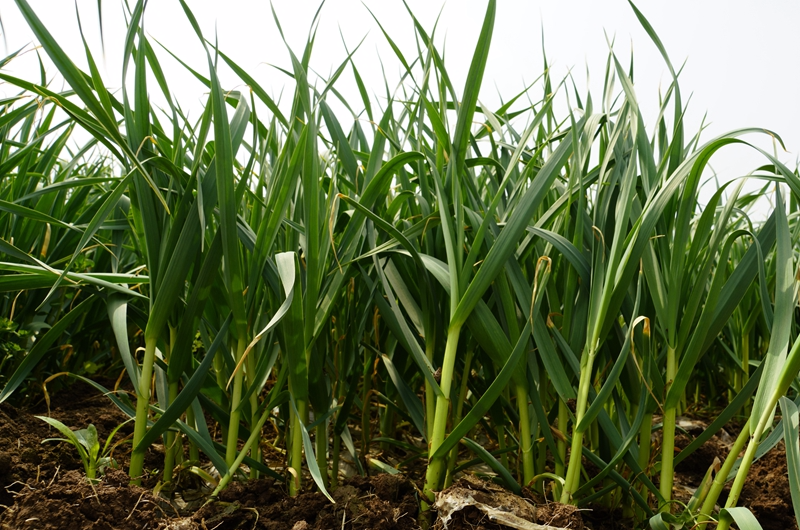Garlic, the stinking rose
Common garlic, also konwn as Poor Man’s Treacle and Russian Penicillin, is widely used in virtually every cuisine in the world. The vegetable and herb has been around for so long that it’s difficult to say for certain where it originated or when it was first unearthed, although it is like a native of Asia. Beyond the fresh garlic thwarting vampires and offending anyone in close proximity after eating a bulb or two, granulated and powdered garlic affords flavor with a reduced “bite” and a long shelf life without refrigeration.

01.a bit of botany
a little botanical information about garlic

Allium sativum is a bulbous plant in the Amaryllidaceae family. The leaves are long, narrow and flat like grass. The bulb (the only part eaten) is of a compound nature, consisting of numerous bulblets, known technically as “cloves,” grouped together between the membranous scales and enclosed within a whitish skin, which holds them as in a sac.
The flowers are placed at the end of a stalk rising direct from the bulb and are whitish, grouped together in a globular head, or umbel, with an enclosing kind of leaf or spathe, and among them are small bulbils.
The common name garlic is of Anglo-Saxon origin, being derived from gar (a spear) and lac (a plant), in reference to the shape of its leaves.
02.where in the world
habitat and range for garlic
Garlic is native to central Asia, and has long been a staple in the Mediterranean region, as well as in Asia, Africa, and Europe.
03.cultivation & harvesting
considerations for growing and harvesting garlic

l climate
There are different types or subspecies of garlic, most notably hardneck garlic (Allium sativum var. ophioscorodon) and softneck garlic (Allium sativum var. sativum). Hardneck garlic is generally grown in cooler climates; softneck garlic is generally grown closer to the equator. Both of these subspecies of garlic prefer sunny locations.l soilGarlic does well in loose, dry, well drained soils. Garlic plants prefer to grow in a soil with a high organic material content, but are capable of growing in a wide range of soil conditions.l growingGarlic is easy to grow and can be grown year-round in mild climates by planting individual cloves in the ground. In cold climates, cloves are planted in the autumn, about six weeks before the soil freezes, and harvested in late spring.l harvestingWhen planted early in the spring, in February or March, the bulbs should be ready for lifting in August, when the leaves will be beginning to wither. Should the summer have been wet and cold, they may probably not be ready till nearly the middle of September. Use garlic cloves fresh, dried and cut into pieces, or powdered.l preservingStore dried garlic (pieces or powdered) in an airtight container in a cool, dry place.04.the rest of the storygarlic history, folklore, literature & more
04.the rest of the story
garlic history, folklore, literature & more

Garlic is one of the most commonly used herbs around. It also happens to have many uses that make it perfect for improving your overall health. There are even a few ways you can use garlic that might surprise you. Scientists have studied the use of garlic for many years. And most studies conclude that it has many benefits.
Garlic can also be used externally to repel mosquitoes and ticks. Garlic sprays are available that work to naturally repel bugs. That means you don’t have to expose your skin or your family’s skin to harmful insecticides.
Garlic is available in many forms. The most common way to use garlic is to eat it. It adds delicious flavor to many sauces, stir-fry, and just about any dish. Many people even eat it raw. However, if you don’t like the flavor of garlic—or the smell it sometimes leaves behind—you may want to try supplements. Garlic supplements are available in capsules that are easy and convenient to take. They also have a less potent smell in some cases.





